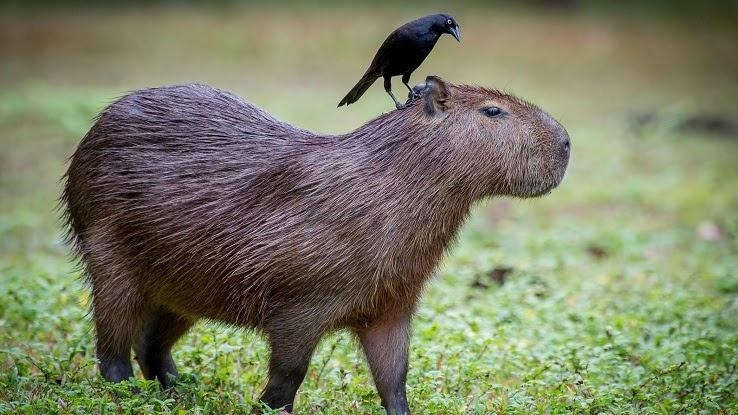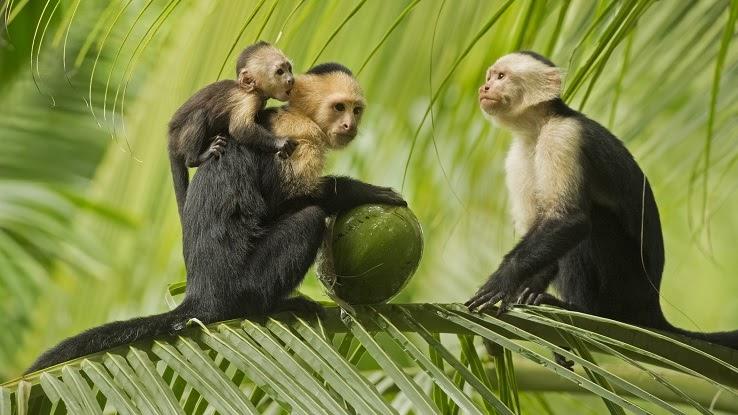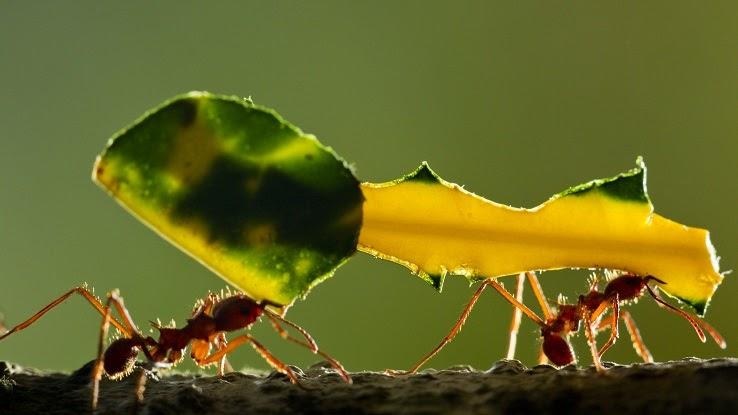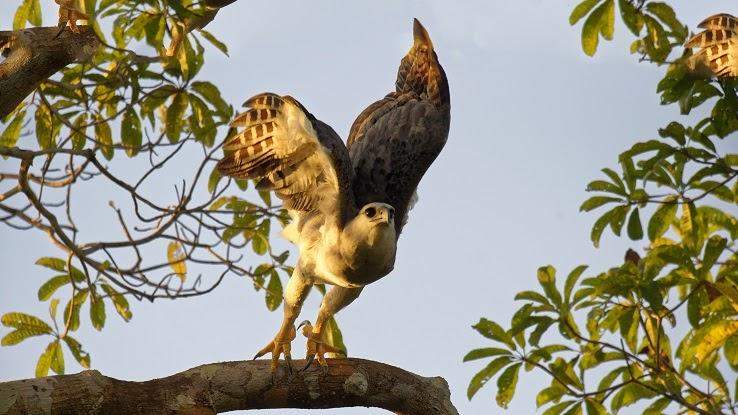What Plants And Animals Live In The Rainforest

An example of mutualism in the rainforest is the pollination of the Durian tree by bats. However, there are many other examples of mutualism in this blazon of ecosystem. Another case is pollinating wasps that eat from different fig species in the Southeast Asian rainforest. The interaction betwixt monkeys that eat fruit from plants or trees is another mutualistic relationship.
Mutualism is a symbiotic relationship between two species in which both species benefit from the interaction. In the case of the monkeys and fruit plants in rainforests, the primates' act of eating fruit from a plant aids in seed dispersal. In this human relationship, the primates obtain nutrient from plants or trees, and in plow, they aid ship the seeds to other areas. This helps foster the survival of dissimilar institute species.
Symbiotic Relationships in the Rainforest
The terms "mutualism" and "symbiosis" can be used interchangeably. Symbiosis in activity is ofttimes described as a symbiotic relationship. Mutualism happens in all kinds of biomes, such as tundras and deserts. Symbiosis in the tropical rainforest is very common, but what is a symbiotic relationship in the rainforest?

Mutualism happens when two organisms from unlike species take a relationship that benefits both species. Both plants and animals participate in mutualism.
Rainforest Animals and Plants
The rainforest is an ideal place in which to observe mutualism because many of the plants and animals live exclusively in this unique tropical surround. While the Amazon Rainforest is a widely known instance, there are rainforests in Due south America, Africa, Asia and even Australia.

Plants and animals in the rainforest utilize mutualism to ensure that all plants have plenty pollen. Mutualism too protects defenseless animals from predators. Symbiotic relationships can assistance animals with mating successfully and with providing food for their young. These relationships help other plants and animals find nutrient.
10 Examples of Mutualism
Chocolate trees, a tropical evergreen tree that produces cocoa beans, take several examples of mutualism. A fungus called endomycorrhizae grows on the roots of the tree. The fungus gets inside the cells of the roots and takes sugar, which it uses as food, from the tree. Then, the tree takes phosphorus from the mucus. Both species are able to grow together and get the nutrients they need the almost from each other.

Before the chocolate tree produces flowers, it grows buds that die off. Although it may look like a dying plant to whatsoever other animal, the rotting buds provide a perfect dwelling house for chocolate midges. Chocolate midges are a type of tropical gnat. As the midges fly in and around the dying flower buds, they pick up pollen and human action equally pollinators for the trees.
Later the buds die, the trees produce flowers, and those flowers bear chocolate fruit. The cocoa pods are not nearly equally delicious as the chocolate that humans eat, just they make a sugariness treat for an brute. The sweet fruit attracts animals like the capuchin monkey and other furry creatures. When these animals lean into a flower to eat the fruit in the eye, their hirsuite faces go covered in pollen. The small animals get pollinators just like bees.
An inside-rainforest example of mutualism happens in the interior of the chocolate tree. Mealybugs eat honeydew and ants eat their feces. Mealybugs are casualty for many other bugs and animals. They live within the chocolate tree and the ants live within the tree with them. The tree provides a dwelling for both animals, and the mealybugs provide nutrient for the ants. In turn, the ants protect the mealybugs. While the mealybugs are defenseless, the ants are better equipped with tough exoskeletons and sharp pincers.
Leafcutter ants thrive in South American rainforests. Truthful to their name, these ants cut upwardly leaves into tiny pieces and drag the leaves back to storage facilities in the underground portions of their anthills. The ants chew the leaves to brand a pulp and store the pulp for afterward use. Leafcutter ants put homemade manure on the pulp, and this allows a mucus to grow. Juvenile leafcutter ants swallow the fungus to survive — and all of the work the ants practice to cutting and process the leaves makes it possible for the mucus to grow.
Capuchin monkeys live in the rainforests of Costa Rica and honey to eat a variety of tropical flowers that abound on copse. When a monkey eats one of these flowers, it burrows its face deep into the portion of the flower that contains pollen. Some of the pollen gets lodged into the monkey's fur, and the monkey pollinates the next blossom past transferring pollen when it eats. The monkey receives a tasty treat, and the plants tin continue growing because the flowers are pollinated. These animals and plants in the tropical rainforest form a symbiotic human relationship.
In rainforests in Asia, the Gongora orchid is pollinated by the Asian carpenter bee. In usual relationships, a bee gets nectar from a institute and pollinates the institute. In this case, the Gongora orchid does not produce nectar, but it does produce an overwhelming scent that female carpenter bees happen to like. The male person bees buzz into the flower to cover themselves in the scent with the intention of alluring females, but in the process of doing so they pick upwardly pollen and comport it to other plants, effectively pollinating them. And then, the male bees covered in the scent of the flower are better able to attract female bees to mate with.
Harpy eagles love the seed-bearing berries and fruits that grow in the rainforest. When one of these eagles eats a berry, its digestive system doesn't completely break downwards the seeds within the fruit. So, when the fauna defecates elsewhere in the rainforest, the seeds from the drupe are spread and new plants can grow.
The wattled jacana is a tropical bird native to Due south American rainforests. These birds are able to catch both a ride and a meal on the backs of large rainforest rodents called capybaras. Wattled jacanas eat bugs, and they notice ticks to exist especially tasty. As big, furry rodents, capybaras conduct plenty of ticks. Capybaras permit wattled jacanas to sit on their backs unharmed. The birds eat a smorgasbord of ticks, and the capybaras are spared the hurting and possible disease that come along with tick bites.
Mutualism in the rainforests is a way of life for the thousands of plants and animals that use special symbiotic relationships to survive. Tropical rainforests are 1 type of biome where animals and plants piece of work together often.
Source: https://www.reference.com/science/example-mutualism-rainforest-ebb836e3ffa17777?utm_content=params%3Ao%3D740005%26ad%3DdirN%26qo%3DserpIndex
Posted by: pridgenforome.blogspot.com



0 Response to "What Plants And Animals Live In The Rainforest"
Post a Comment